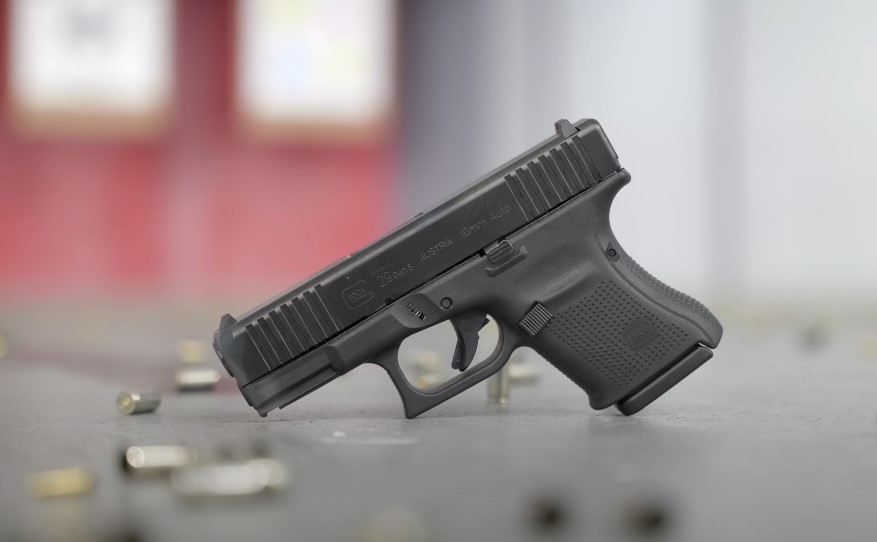Physical Address
304 North Cardinal St.
Dorchester Center, MA 02124
Physical Address
304 North Cardinal St.
Dorchester Center, MA 02124

The Glock 29 Gen 5 is a powerful and reliable handgun, but like any firearm, it’s not immune to issues.
Understanding common Glock 29 Gen 5 problems can save you time, money, and frustration.
This guide will walk you through these issues and their simple fixes, helping you ensure your gun performs at its best.
The Glock 29 Gen 5, while dependable, can face issues like feeding problems, trigger stiffness, or ejection failures.
Most of these problems stem from improper maintenance, poor ammo quality, or worn-out parts.
By keeping your gun clean, using quality ammunition, and inspecting parts regularly, you can avoid most of these hassles and keep your firearm running smoothly.

Cause:
This issue is often linked to the magazine.
A weak magazine spring might not push the next round up fast enough for the slide to catch it.
It can also be caused by an improperly seated magazine, residue buildup on the feed ramp, or using poor-quality ammunition that is out of spec.
Fixes:
First, ensure your magazine is fully inserted and clicks into place. If the problem persists, clean the feed ramp thoroughly with a quality gun solvent and a soft brush.
Try using different brands of high-quality ammunition. If the issue continues, consider replacing the magazine spring or the entire magazine.
Cause:
An FTE can be caused by a weak grip, also known as “limp wristing,” which prevents the frame from providing enough resistance for the slide to cycle correctly.
It can also result from a dirty or damaged extractor, a weak ejector spring, or underpowered ammunition that doesn’t generate enough force to push the slide back fully.
Fixes:
Focus on maintaining a firm, high grip with locked wrists to ensure the firearm has a stable platform to recoil against.
Regularly clean the extractor and the area around it. If cleaning doesn’t resolve the issue, inspect the extractor for any signs of chipping or wear and consider replacing it or its spring.
Read Also: 10 Common Glock 20 Gen 5 Problems (With Easy Fixes)

Cause:
This problem is commonly caused by the shooter’s grip interfering with the slide stop lever, unintentionally holding it down during firing.
It can also stem from a weak magazine follower spring that fails to push the slide stop up with enough force. A dirty or worn slide stop could also be the culprit.
Fixes:
Adjust your grip to ensure your thumb is not resting on or near the slide stop lever. Disassemble and clean your magazines, checking the follower and spring for damage.
If the problem continues with multiple magazines, inspect and clean the slide stop lever. If it appears worn, replacing it is a simple fix.
Cause:
This issue is almost always caused by the shooter’s grip. The thumb of the support hand might be inadvertently pushing the slide stop lever upward during recoil.
It can also be caused by the bullet noses of the rounds in the magazine bumping against the slide stop lever, particularly with certain bullet shapes.
Fixes:
Practice a thumbs-forward grip where both of your thumbs are pointing toward the target, resting along the frame below the slide.
This keeps them clear of the slide stop lever. If the issue persists, you might try a different brand of ammunition with a more rounded bullet profile to see if that prevents contact with the slide stop.
Cause:
The most common cause is a dirty firing pin channel, which can slow the firing pin’s movement.
It may also result from using hard-primered ammunition or an aftermarket striker spring that is too light.
Debris or a broken part within the firing pin assembly can also obstruct its path.
Fixes:
Thoroughly clean the firing pin channel, ensuring it is free of oil and debris.
Stick to factory-recommended parts, especially the striker spring, as lighter springs can reduce reliability.
If you’ve been using a particular brand of ammunition, try a different one to see if the primers are softer.
Cause:
This is typically a mechanical issue related to the trigger assembly, often involving the trigger spring or connector.
A broken or improperly installed trigger spring is a frequent cause. Debris lodging in the trigger mechanism or a misaligned connector can also prevent the trigger from resetting properly.
Fixes:
This problem often requires a detailed inspection of the trigger assembly. A certified Glock armorer is the best person to diagnose and fix it.
If you’re comfortable with it, you can disassemble the frame and inspect the trigger spring and connector for damage or incorrect installation, replacing parts as needed.
Cause:
An improperly seated magazine is the most common reason. It can also be caused by a worn or damaged magazine catch.
Some aftermarket magazines may not fit as securely as factory ones, leading to this problem. In rare cases, the shooter’s grip might accidentally activate the magazine release during recoil.
Fixes:
Ensure you firmly seat the magazine when loading, giving it a solid “tap” to confirm it’s locked in.
If the issue persists with multiple factory magazines, the magazine catch is likely worn and should be replaced.
Avoid a grip that places pressure on the magazine release button.
Cause:
Inconsistent accuracy is often shooter-induced, stemming from poor fundamentals like trigger control or sight alignment.
However, it can also be related to the ammunition being used, as different loads perform differently. A dirty barrel or damaged sights can also negatively affect accuracy.
Fixes:
Focus on your shooting fundamentals, perhaps with the help of a qualified instructor or by practicing dry-firing.
Test various brands and weights of ammunition to see which one your Glock 29 prefers.
Give the barrel a thorough cleaning, and ensure your front and rear sights are secure and haven’t shifted.
Cause:
This “brass to face” issue is often related to the ejector and extractor. The angle and condition of the ejector play a significant role in the direction of ejection.
A weak or inconsistent grip (“limp wristing”) can also contribute by altering the slide’s cycling speed and timing, which affects the ejection pattern.
Fixes:
First, confirm you are using a firm, consistent grip. If that doesn’t solve the problem, the issue likely lies with the ejector or extractor.
You may need to have a gunsmith inspect and possibly replace the ejector with an updated part designed to correct this issue, which was more common in earlier Gen 4 models but can still occur.
Cause:
Normal friction from the slide cycling causes wear over thousands of rounds. However, running the gun without proper lubrication can accelerate this wear significantly.
An improperly installed or out-of-spec aftermarket part could also cause uneven pressure and friction, leading to premature damage.
Fixes:
Follow Glock’s lubrication instructions, applying a small amount of quality gun oil to the specified points on the rails after each cleaning.
Stick with OEM parts to ensure proper fit and function. Regularly inspect the rails for any unusual gouging or chipping, which could signal a more serious problem requiring an armorer’s attention.
Knowing how to identify and address these common issues will ensure your Glock 29 Gen 5 remains a dependable tool for years to come.
Regular cleaning, proper lubrication, and using quality ammunition are the foundations of firearm reliability.
If you ever encounter a problem you can’t solve, don’t hesitate to consult a certified Glock armorer for professional assistance.
For reliability and performance, use high-quality, factory-new 10mm Auto ammunition from reputable brands. Avoid remanufactured or steel-cased ammo for best results.
It’s a good practice to clean your firearm after every shooting session. A thorough cleaning and lubrication will prevent buildup and ensure smooth operation.
While many aftermarket parts are available, they can sometimes affect reliability. For a self-defense firearm, it is generally recommended to stick with original factory parts.
“Limp wristing” is a weak grip that allows the frame to move too much during recoil. This can prevent the slide from cycling fully, leading to feeding or ejection failures.
Yes, its compact size combined with the power of the 10mm cartridge makes it a popular choice for concealed carry, especially for those wanting more stopping power.